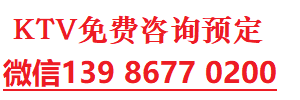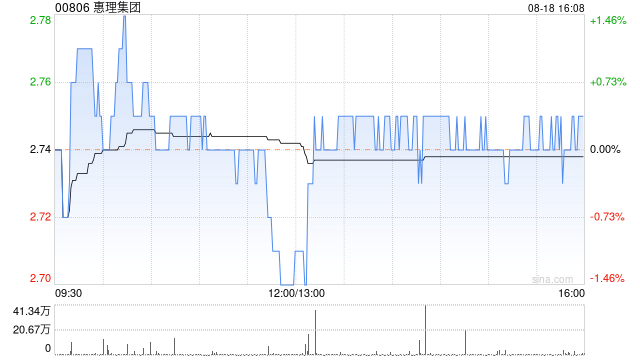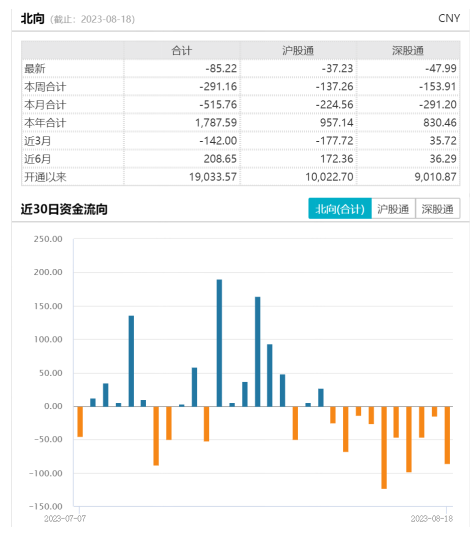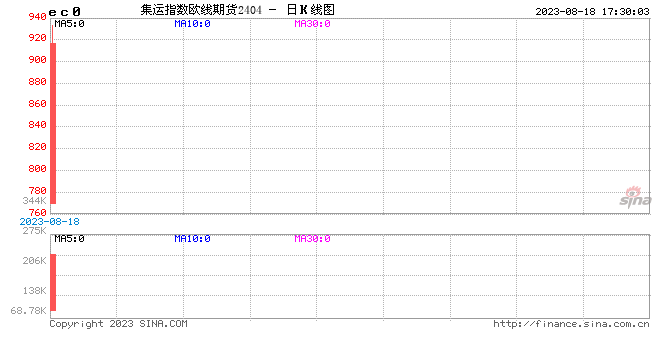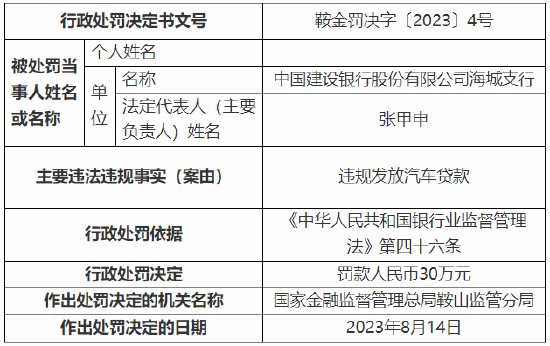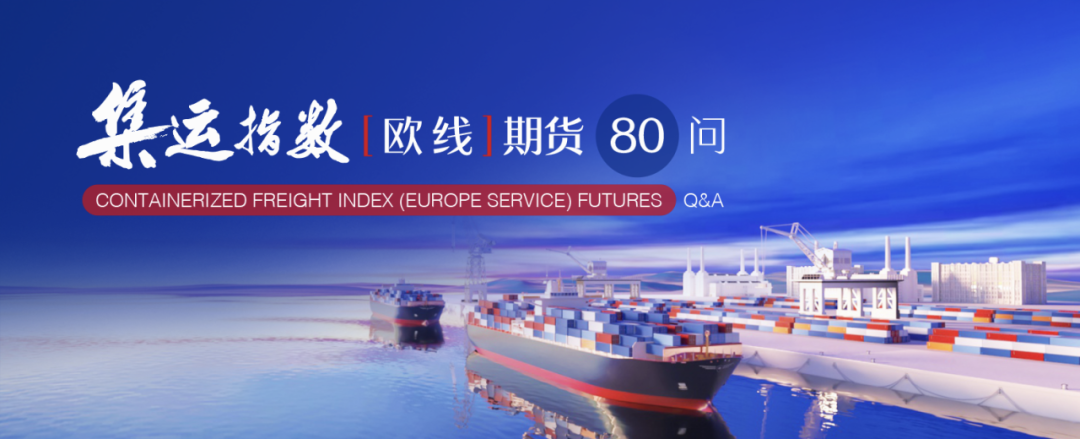
上海出口集装箱结算运价指数(欧洲航线)介绍
21.
上海出口集装箱结算运价指数
(欧洲航线)编制涉及哪些规则?
上海出口集装箱结算运价指数(欧洲航线)【以下简称集运指数(欧线)】的编制规则主要包括《上海出口集装箱结算运价指数编制规则(暂行)》《上海航运交易所指数规则修订实施办法》《上海航运交易所指数终止办法》《上海航运交易所指数错误修正办法》等。
具体内容可在上海航运交易所官网(www.sse.net.cn)查询。
22.
集运指数(欧线)的治理体系如何?
上海航运交易所通过建立包括指数专家委员会、指数编委会、指数业务监督委员会在内的综合治理体系,确保标的指数的公正和独立。
指数专家委员会由上海航运交易所聘请的专家组成,负责对以下涉及标的指数的事项提出意见和建议:(1)指数编制方法、规则和实施细则的制定和变更;(2)涉及指数运作和业务发展的事项。
中国出口集装箱运价指数编委会欧美航线分委会由符合条件的采样单位构成,负责审议决定欧美航线指数编制规则实施相关事宜,并根据标的指数编制方案报送数据。
指数业务监督委员会是上海航运交易所的指数监督机构,负责对上海出口集装箱结算运价指数编制及治理的各个方面进行监督。
23.
集运指数(欧线)数据采样单位
包括哪些?
集运指数(欧线)数据采样单位均为上海航运交易所中国出口集装箱运价指数编委会欧美航线分委会的成员公司。截至2023年6月,上海航运交易所中国出口集装箱结算运价指数编委会欧美航线分委会共有16家单位,其中15家单位(班轮公司11家、货代公司4家)向上海航运交易所报送欧线结算运价数据。
中国出口集装箱运价指数编委会欧美航线分委会单位名单可在上海航运交易所官网(www.sse.net.cn)查询。
24.
上海航运交易所采集的用于编制
集运指数(欧线)的运价信息
包括哪些?
上海航运交易所对编委会成员公司运价采集进行了明确定义。定义的内容包括起始港、目的港、货类、箱型及尺寸、付款方式、运输条款、运价构成、计价币种。其中,起始港为上海港,目的港是该航线的基本港----汉堡、鹿特丹、安特卫普、弗利克斯托、勒阿弗尔;箱型及尺寸为干货箱,20GP(20 英尺普箱)、40GP(40英尺普箱)和 40HQ(40 英尺高箱);货类为一般货类;付款方式为预付;运输条款为CY-CY(场到场);运价构成为按箱收取的基本海运费及海运相关附加费,附加费包括燃油相关附加费(BAF/FAF/LSS等)、币值附加费(CAF等)、旺季附加费(PSS等)、战争附加费(WRS等)、港口拥挤附加费(PCS等)、运河附加费(SCS/SCF等)以及其他按箱收取的美元海运附加费。
班轮公司即期市场定义为三个月以内短期合约市场,或者基于FAK(Freight All Kinds Rates)成交客户的市场,或者公开市场(Open);货代公司即期市场定义为其与客户达成的零售合约市场,且不因货主企业类型或箱量的特殊性等影响成交价格。
25.
集运指数(欧线)是如何编制出来的?
集运指数(欧线)编制过程如下:
第一步:数据采集
样本公司按照定义要求,通过应用程序接口(API)在每周一北京时间0:00-13:00系统自动化传输实际离港时间(ATD)为上周一0:00至上周日24:00的航班的成交提单数据。每一票提单主要包括提单号(具有唯一性)、目的港、分箱型的箱量和对应的运费等数据信息。
第二步:数据预处理
(1)提单信息核证。上海航运交易所利用上海口岸码头提单数据,核查采集数据中每票提单号对应的船名、航次、实际离港时间等信息,并核对船期是否符合运价采集定义要求,不符合要求的提单不参与指数计算。
(2)班轮与货代公司重复的提单记录(提单号重复),若货代公司运价小于班轮公司运价,弃用本票提单货代运价数据。
(3) 离群值处理。对样本公司20英尺箱型运价数据、40英尺箱型运价数据,采用格拉布斯或者拉依达准则检验剔除离群值。之后,再对分箱型所有样本公司的剩余运价数据从大到小排序,分别剔除占总箱量10%的高运价和占总箱量10%的低运价数据。
(4)单家样本公司箱量份额过大比例限制。分箱型单家样本公司的箱量份额不得超过50%。若超过50%,则将每票提单的箱量均乘以同一个系数,使得该样本公司箱量份额降低至50%。
第三步:计算指数
经过以上步骤后:
(1)计算分箱型平均运价。剩余全部提单的总运费汇总值除以所有提单的总箱量汇总值,得出分箱型的平均运价。
(2)计算分箱型定基价格指数。平均运价除以基期平均运价,再乘以1000点,得出分箱型当期的定基价格指数。
(3)计算欧洲航线指数。分箱型定基价格指数加权平均计算,得出欧洲航线指数。
集运指数(欧线)的详细编制方法可参见上海航运交易所官网(www.sse.net.cn)发布的《上海出口集装箱结算运价指数编制规则(暂行)》。
26.
集运指数(欧线)发布频率如何?
基期和基期指数分别是什么?
集运指数(欧线)于每周一 15:05(北京时间)在上海航运交易所官网(www.sse.net.cn)发布。若遇周一为非工作日,上海航运交易所可根据情况选择正常发布或者顺延发布。上海航运交易所应于每年最后一周,在上海航运交易所网站公布下一年度的指数发布日。如果发生国务院临时调整节假日安排,上海航运交易所可以调整指数发布日。在国务院发布临时调整节假日安排后的一个工作日内,上海航运交易所相应作出是否调整指数发布日的决定,如决定调整发布日,将于决定后 24 小时内向市场发布调整内容的公告。
集运指数(欧线)的基期为2020年6月1日,基期指数为1000点。
27.
集运指数(欧线)编制方案涉及
哪些特殊情况?
上海航运交易所在《上海出口集装箱结算运价指数编制规则(暂行)》中明确了上海出口集装箱结算运价指数应急编制的情形,具体包括:发生本期分航线采样班轮公司中超过三分之一的公司无数据、或者某箱型有结算运价数据的公司个数少于 5家(小于 5 家且大于等于 1 家),但样本公司的数量仍满足最小样本公司数量;当期样本公司数满足该航线最小样本公司个数 、但该航线某一箱型本期无运价数据;突发重大技术故障;当期样本公司数不满足该航线最小样本公司个数。出现以上应急情形时,上海航运交易所按照应急编制指数方法编制指数并对外发布。应急编制指数的效力等同于常规发布的指数的效力。
28.
上海航运交易所对集运指数(欧线)
编制的应急演练是怎么规定的?
上海航运交易所明确不同场景的应急预案,并成立了指数应急编制小组和指数风险管理小组。指数风险管理小组负责建立风险事件库,每年开展至少一次应急事件演练。指数应急演练报告提交指数业务监督委员会。
29.
集运指数(欧线)的样本公司
季度筛选、调整的依据和
流程是怎样的?
上海航运交易所制定了《上海出口集装箱结算运价指数样本公司季度筛选及调整方法》,作为样本公司季度筛选和调整的依据。每季度,上海航运交易所根据该公司是否为欧美航线分委会成员、上一季度平均每周成交记录票数、上一季度无成交记录的累计期数、上一季度是否有无故缺报、是否通过指数系统对接季度校验等五大指标,对样本公司采集的运价信息进行评估和筛选,并根据评估结果确定本季度信息采样的样本公司。
30.
上海航运交易所对样本公司的
数据校验是怎样的?
为保障集运指数(欧线)数据采集系统稳定运行,确保采集数据的准确性、真实性、完整性、唯一性和一致性,上海航运交易所建立了季度校验机制。主要包括:(1)每季度校验样本公司通过系统对接传输的数据是否符合运价采集定义;(2)每季度校验所有样本公司运价数据采集定义的执行情况、技术对接系统运行情况等;(3)校验方式为通过样本公司的生产系统进行现场校验或者视频校验。
31.
集运指数(欧线)计算错误后
如何修正?
上海航运交易所制定了《指数错误修正办法》,对标的指数错误修正进行了规定。标的指数错误类型包括外部数据源错误、指数编制操作错误、软硬件基础设施故障等。对于已向市场发布的指数行情,若发现重大错误,经审慎评估并征求指数专家委员会意见后,由上海航运交易所决定是否需要重新计算并发布。对于标的指数发生的历史错误,如发现时已超过六个月,一般不予处理。
32.
集运指数(欧线)在哪些情形下
会中止发布?
因不可抗力(包括但不限于地震、战争、罢工等)导致现货市场缺乏计算指数的任何数据源,上海航交所有权中止对外发布指数,并及时对外公告。
自2020年11月2日指数正式发布以来,未发生中止发布事件。
33.
集运指数(欧线)在哪些情形下会
终止发布?
上海航运交易所制定了《指数终止办法》,规定只有在发生下述任一情形时,才考虑对相关指数进行指数终止操作:(1)缺乏计算指数的数据源,或者计算指数的数据源质量难以支持稳定准确的指数计算;(2)由于市场结构的显著变化等原因,指数难以刻画市场实际情况;(3)指数缺乏足够数量的样本;(4)指数定期审阅结果显示指数可能需要终止的情形;(5)相关法律法规规定或监管要求等其他原因。
在具备可操作性的前提下,指数终止应在正式实施前至少三个月在上海航运交易所官网进行公告。公告内容包括指数终止的背景及实施时间表。发布终止公告后,上海航运交易所应继续该指数的日常维护、计算和发布,直到终止日为止。
34.
上海航运交易所对编委会成员报送信息
的保密规定有哪些?
上海航运交易所制定了《集装箱运价指数编制安全保密规范》(以下简称《保密规范》)。根据《保密规范》,运价指数编制小组以及上海航运交易所相关人员严格履行保密义务。相关人员与上海航运交易所签订保密承诺书,对于违反《保密规范》的泄密行为,根据《保密法》和上海航运交易所有关规定予以严肃查处。
35.
集运指数(欧线)的审核流程、
编制人员的安全保密措施是怎样的?
一般情况下,集运指数(欧线)的编制和发布由系统自动产生。只有在系统自动触发相关预警后,经过授权的指数应急人员才能进入上海航运交易所特别设置的指数应急办公室,对指数系统中的相关数据进行审阅和相关操作。
Compilation and Publication of
SCFIS (Europeservice)
21.
What are the rules governing
the compilation of
SCFIS (Europeservice)?
The rules governing the compilation of Shanghai (export) Containerized Freight Index based on Settled Rates (SCFIS) (Europeservice) mainly include the Rules for Compilation of SCFI based on Settled Rates (Provisional), Measures of Shanghai Shipping Exchange for Amendments to Index Rules, Measures of Shanghai Shipping Exchange for Termination of Indices, and Measures of Shanghai Shipping Exchange for the Correction of Index Errors.
These rules are available on SSE’s official website.
22. What is the governance system
of SCFIS (Europeservice)?
SSE develops a comprehensive governance system that is comprised of the Index Expert Committee, Index Compilation Committee, and Internal Oversight Committee to ensure the impartiality and independence of the underlying index.
The Index Expert Committee is composed of experts engaged by。SSE and advises on matters relating to the underlying index: (1) the formulation and modification of compilation methods, rules, and detailed implementation rules of the index, and (2) the operation and commercial development of the index.
The index compilation committee is the Europe-US Service Subcommittee under the China (Export) Containerized Freight Index (CCFI) Compilation Committee. Consisting of eligible samplers, the Subcommittee is responsible for deciding on matters relating to the implementation of the compilation rules of SCFIS Europe and US services and reporting the relevant data according to the index compilation plan.
The Internal Oversight Committee, as the internal supervisory body of SSE, oversees matters relating to the compilation and governance of SCFIS.
23.
What are the samplers of
SCFIS (Europeservice)?
The samplers are the panelists of the Europe-US Service Subcommittee under the SSE CCFI Compilation Committee. As of June 2023, the Subcommittee has 16 panelists, of which 15 (including 11 liner companies and 4 freight forwarders) report the settled freight rates of the Europeservice to SSE.
The list of the panelists is available on SSE’s official website.
24.
What is included in freight rate
information collected by SSE for
the compilation of
SCFIS (Europeservice)?
SSE has a clear specification on the freight rate information collected from the panelists of the Index Compilation Committee. The specification covers the port of departure, port of destination, cargo type, container type and size, payment method, shipping terms, freight composition, and currency. Specifically, the port of departure is the Port of Shanghai; the port of destination is the base port of the route—Hamburg, Rotterdam, Antwerp, Felixstowe, and Le Havre. The containers are dry cargo containers, including 20-foot General Purpose containers (20GP), 40-foot General Purpose containers (40GP), and 40-foot High Cube containers (40HQ). The cargoes are general cargoes. The payment method is the prepayment of freight. The shipping term is Container Yard to Container Yard (CY/CY). The freight comprises the per-container ocean freight and related surcharges, which include fuel-related surcharge (e.g., BAF/FAF/LSS), currency surcharge (e.g., CAF), peak season surcharge (e.g., PSS), war surcharge (e.g., WRS), port congestion surcharge (e.g., PCS), canal surcharge (e.g., SCS/SCF), and other per-container USD ocean freight surcharges.
The spot market for shipping liners is defined as a three-month or less contract market, or a FAK (Freight All Kinds Rates)-based market, or an open market. The spot market for freight forwarders is defined as a market for retail contracts between them and clients, and the transaction price in which is not influenced by such factors as the type of cargo owner or the particulars of container volume.
25.
How is SCFIS (Europeservice)
compiled?
The SCFIS (Europeservice) is compiled through the following process:
Step 1: Data collection
According to the SSE specification, sample companies will, during 0:00-13:00 each Monday Beijing time, transmit information from the executed bills of lading (B/L) for voyages with actual departure time (ATD) between 0:00 last Monday and 24:00 last Sunday through the application program interface (API) automation system. Each B/L contains such information as B/L number (unique), destination port, container volume by container type and corresponding freight rate.
Step 2: Data pre-treatment
(1) Verifying the B/L information. SSE uses the manifest data from Shanghai port to verify the information on each reported B/L such as the name of the ship, voyage, and ATD, and check whether the shipping schedule complies with the criteria for inclusion. Non-compliant data are excluded from index calculation.
(2) Checking for duplicated B/L records of liner and freight forwarder. If the forwarder’s freight rate is lower than the liner’s, the former will not be used.
(3) Removing outliers. SSE first screens out outliers of the freight rates for 20’ containers and 40’ containers by applying the Grubbs or Pauta tests, then for each container type screens out the highest 10% and lowest 10% of the remaining freight rates from all sample companies.
(4) Limiting over-representation. SSE caps the container volume share of any single sample company by container type at 50%. An over-represented sample company’s container volume will be reduced to 50% by multiplying the volume of each B/L with the same coefficient.
Step 3: Index Calculation
After the above steps:
(1) Calculating the average freight rate by container type. The total freight rates of all remaining B/L divided by the total container volume equals the average freight rate.
(2) Calculating the benchmarking price index by container type. The average freight rate divided by the average freight rate on the base date, and then multiplied by 1000 equals benchmarking price index by container type for the current period.
(3) Calculating SCFIS (Europeservice). The weighted average of the benchmarking price index by container type is the SCFIS (Europeservice).
For the details of the compilation of SCFIS (Europeservice) please refer to the Rules for Compilation of SCFI based on Settled Rates (Provisional) published on SSE’s official website.
26.
How often is the
SCFIS(Europeservice)
published? What is the base date
and the base date index?
The SCFIS (Europeservice) is published on SSE’s official website at 15:05 each Monday (Beijing time). If a Monday is not a working day, SSE may publish the index either on that day or the following working day. In the last week of each year, SSE should announce the next year’s publication date of the index on its website. In case the State Council adjusts any holiday arrangement at short notice, SSE may change the publication date accordingly. SSE should decide on whether to make the change in one working day after the State Council’s notice and, if deciding to change, should announce the decision within 24 hours.
The base date is June 1, 2020, and the base date index is 1,000.
27.
What special circumstances have
been considered in the compilation
plan of SCFIS (Europeservice)?
SSE has specified the emergency compilation method for SCFIS in the Rules for Compilation of SCFI based on Settled Rates (Provisional). SSE will use this method to compile SCFIS and publish the index in the case of any of the following emergencies: (1) more than one-third of the sample liners provide no freight rate by route for the current period, or the number of sample companies that provide settlement rates for a certain container type is less than five (more than or equal to one) but still meets the minimum requirement; (2) the number of sample companies in the current period meets the minimum requirement for a certain route, but no freight data is provided for a certain container type for this route; (3) a major technical failure suddenly occurs; (4) the number of sample companies in the current period fails to meet the minimum requirement for a certain route. The emergency SCFIS compiled by SSE will have the same effect as the regularly published SCFIS.
28.
What are the rules of SSE
regarding emergency drills for
SCFIS (Europeservice)?
SSE has developed contingency plans for different scenarios and set up the Index Emergency Compilation Group and Index Risk Management Group. The Index Risk Management Group is responsible for establishing a risk event database, organizing at least one emergency drill each year, and submitting emergency drill reports to the Index Oversight Committee.
29.
What are the basis and procedures
for the quarterly screening and
adjustment of freight rate
information from SCFIS (Europe
service) sample companies?
SSE has developed the Methodologies for the Quarterly Screening and Adjustment of Freight Rate Information from SCFIS Sample Companies as the basis for the screening and adjustment. Each quarter, SSE evaluates and screens the freight rate information collected from a sample company based on whether the sample company is a panelist of the Europe-US Service Subcommittee, the weakly average number of transaction records in the previous quarter, the total number of periods without a transaction record in the previous quarter, whether there is any missed report without justification in the previous quarter, and whether the index system is subject to quarterly validation. SSE will determine the sample companies for the quarter based on the evaluation results.
30.
How SSE verifies the data from
sample companies?
To ensure the stable operation of the SCFIS (Europeservice) data collection system and the accuracy, authenticity, integrity, uniqueness, and consistency of the data collected by such system, SSE has established a quarterly data verification regime. Under this regime, SSE: (1) verifies each quarter whether the data transmitted by each sample company to the SCFIS data collection system fall within the specification for freight rates; (2) verifies each quarter the observance of freight rate specification by all sample companies and the operations of the interconnected IT systems; and (3) verifies the production system of each sample company through site inspection or videos.
31.
How to correct miscalculated
SCFIS (Europeservice)?
SSE has formulated the Measures of Shanghai Shipping Exchange for the Correction of Index Errors, providing for the correction of SCFIS errors, including errors of external data sources, errors in index compilation, and failures of software, hardware, and other infrastructures. In case a significant error is found in a published index, SSE will decide on whether to recalculate and republish the index after prudent assessment and consultation with the Index Expert Committee. In general, SSE will not deal with any error that occurred more than six months ago.
32.
Under what circumstances will SSE
suspend the publication of
SCFIS (Europeservice)?
If there lacks sources of data in the spot market for calculating the index due to force majeure (including but not limited to earthquake, war, and strike), SSE has the right to suspend the publication of the index and make a timely announcement.
The publication of the index has never been suspended since its publication on November 2, 2020.
33.
Under what circumstances will SSE
terminate the publication of
SCFIS (Europeservice)?
SSE has formulated the Measures of Shanghai Shipping Exchange for Termination of Indices, which stipulates that termination will be considered only when any of the following circumstances occurs: (1) there lacks data sources for index calculation, or the quality of available data sources is not high enough to support stable and accurate index calculation; (2) the index cannot reflect market reality due to any significant changes in market structure and other reasons; (3) there lacks sufficient samples; (4) any regular index review suggests the termination of the index; or (5) any applicable laws or regulations require the termination of the index or any other reasons.
As long as it is feasible, SSE should announce the termination of the index on its official website at least three months in advance and state the background and schedule for the termination. After the announcement, SSE should continue the daily maintenance, calculation, and publication of the index until the termination date.
34.
What are the rules governing the
compilation of SCFIS (Europeservice)?
SSE has developed the Confidentiality Rules for the Compilation of Containerized Freight Index, which requires the index compilation team and relevant SSE personnel to strictly observe the confidentiality requirements. The relevant personnel have signed a confidentiality undertaking with SSE. Any disclosure in violation of the Confidentiality Rules will be investigated and handled in accordance with the Law of the People’s Republic of China on Guarding State Secrets and applicable SSE rules.
35.
What is the review process of
SCFIS (Europeservice)?
What are the confidentiality
measures for the index
compilation personnel?
In general, SCFIS (Europeservice) is compiled and published automatically by SSE’s system. Only when the system automatically sends out a warning can authorized emergency personnel enter the emergency response office specially set up by the SSE to review system data and take corresponding actions.
Disclaimer
This Q&A is prepared by the Shanghai International Energy Exchange (“INE”) and the Shanghai Shipping Exchange (“SSE”) from the materials they have compiled to provide market participants with information on the Containerized Freight Index (Europeservice) Futures. While every effort has been made to ensure the information in this Q&A is reliable, accurate, and complete, INE and SSE do not provide any guarantee as to its accuracy, appropriateness, and completeness and expressly disclaims all liabilities for any error or omission it may contain. INE and SSE are also under no obligation to update, supplement, correct, or revise any information contained herein.
The information provided in this Q&A is for reference purposes only and does not constitute any investment advice, invitation to invest, or any other form of recommendation to engage in investment activities, and is not to be relied upon for investment research or decision-making, nor in the determination or certification of moral, liability, or legal matters, nor is it accompanied by any form of guarantee, whether expressed or implied in this Q&A. INE and SSE disclaim all liabilities for any direct or indirect investment gains or losses arising from the information provided herein.
This Q&A is jointly copyrighted by INE and SSE and may not be reproduced, copied, or published in any form by any organization or individual without prior written permission. If any information in this Q&A is to be cited, it must be attributed to the rightful owners and must not be cited, abridged, or modified in a manner contrary to its original meaning. INE and SSE reserve the right to take legal actions against those who violate these provisions. All third-party trademarks and intellectual properties appearing in this Q&A are the property of their respective owners.
来源:上期所发布
